Every time you ask ChatGPT to check your homework or write another LinkedIn post, somewhere in the world, a small piece of circuitry sparks into action. Multiply that by billions of queries daily, and you’re looking at an energy footprint larger than most countries.
AI does its thinking inside data centres. Think of a data centre as a mechanical mind: central processing units (‘CPUs’) and graphics processing units (‘GPUs’) crunch numbers; storage units retain data; routers direct traffic through networks; vast cooling systems keep the whole thing from melting.
All of this is incredibly electricity-intensive. In this post, I’ll show what this means for the energy transition.
Projected power demand
Global investment in data centres was half a trillion dollars last year. That’s an almost doubling in just 2 years.
They’re also increasingly important for economic growth and national security. Just last year, the British government reclassified data centres as ‘critical national infrastructure’ alongside the water supply and the health service.
Since 2005, the amount of electricity consumed annually by data centres has increased by 230 per cent.
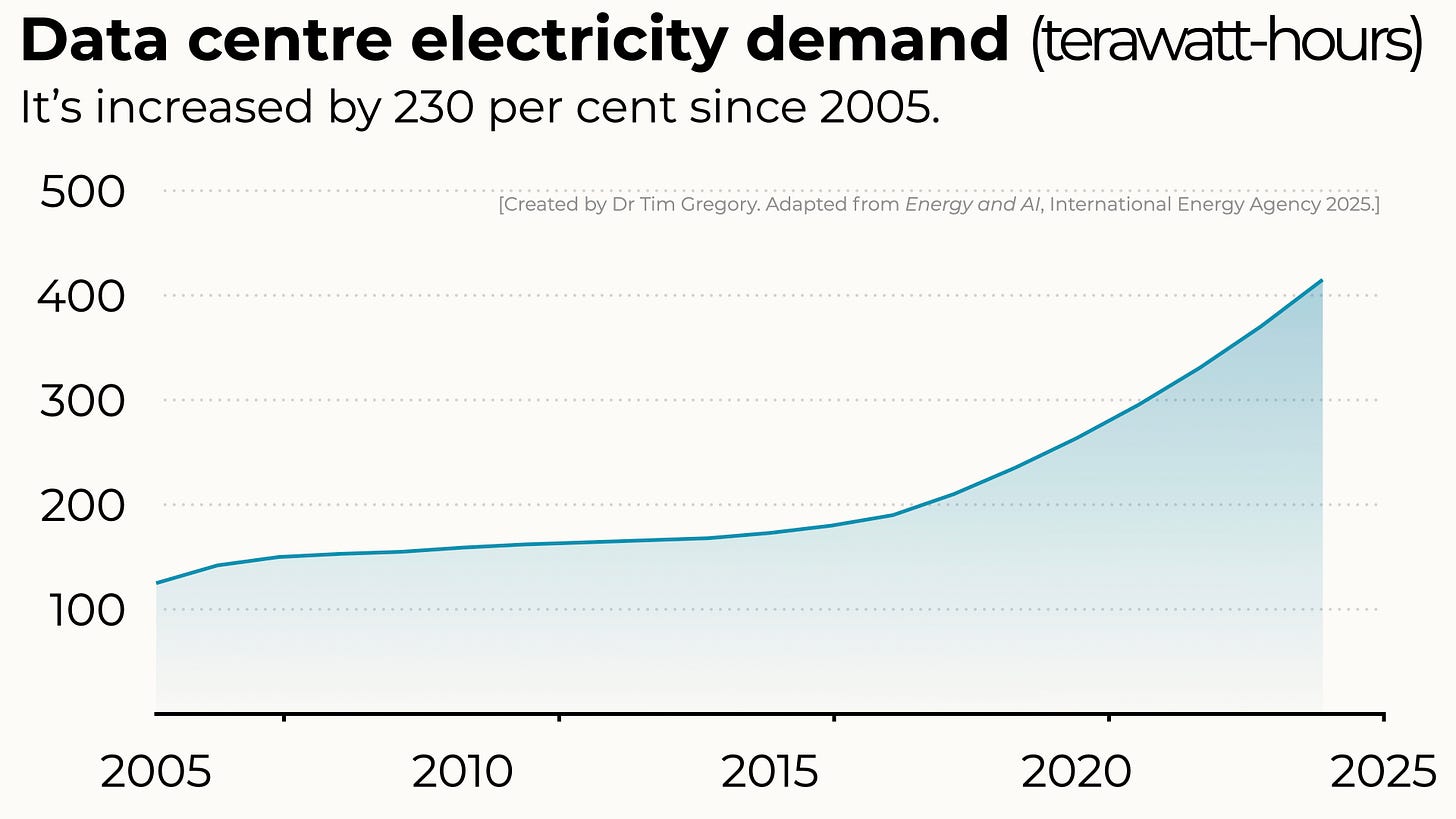
The main cause of this rising demand is AI. ChatGPT; Grok; Claude; Gemini; Copilot; DALL·E… pick your favourite. Every one of them is hungry for electricity (except Apple Intelligence, bless it, which nobody uses 😉).
And it’s set to keep on climbing. The International Energy Agency recently projected the future electricity demand. They outlined a few scenarios:
Upper estimate (the so-called ‘lift-off case’): AI is adopted widely, and new data centres are deployed rapidly.
Middle estimate (the so-called ‘base case’): the best current projection based on industry expectations.
Lower estimate (the so-called ‘headwind case’): AI is adopted slowly, and there are bottlenecks in building new data centres (e.g., weak supply chains).
This is what the projections look like:
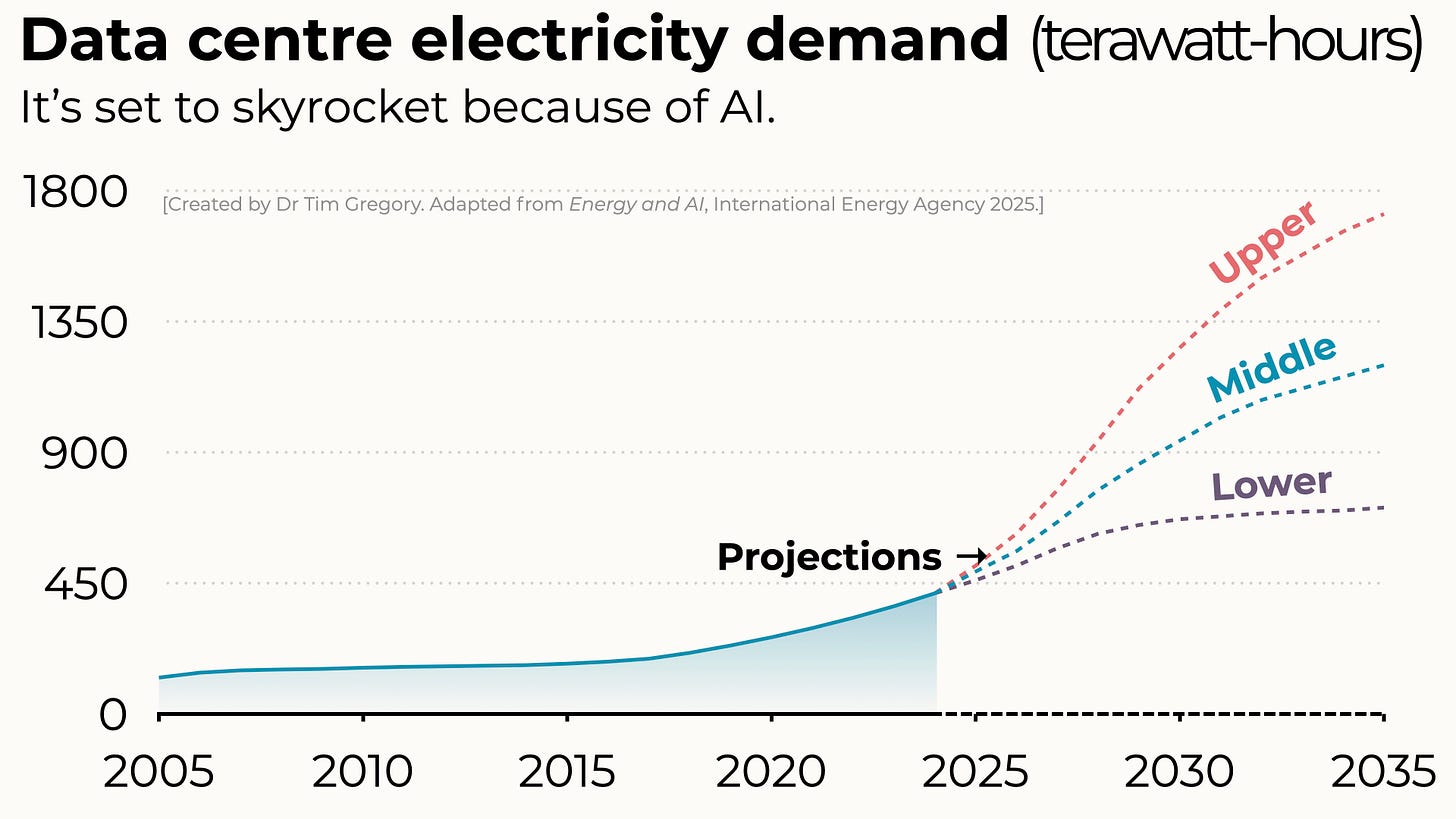
Either way, that’s a lot of electricity. What does this mean in context?
Power in context
The terawatt-hour — a unit of electrical energy — can feel a bit detached. And so let’s compare those electricity projections with something a bit more tangible.
In 2024, data centres consumed 415 terawatt-hours of electricity. That’s as much as the entirety of Switzerland, Austria, Finland, Belgium, and the Netherlands consumed combined.
Here’s how 415 terawatt-hours compares to that of the annual electricity used by the world’s top electricity consumers:
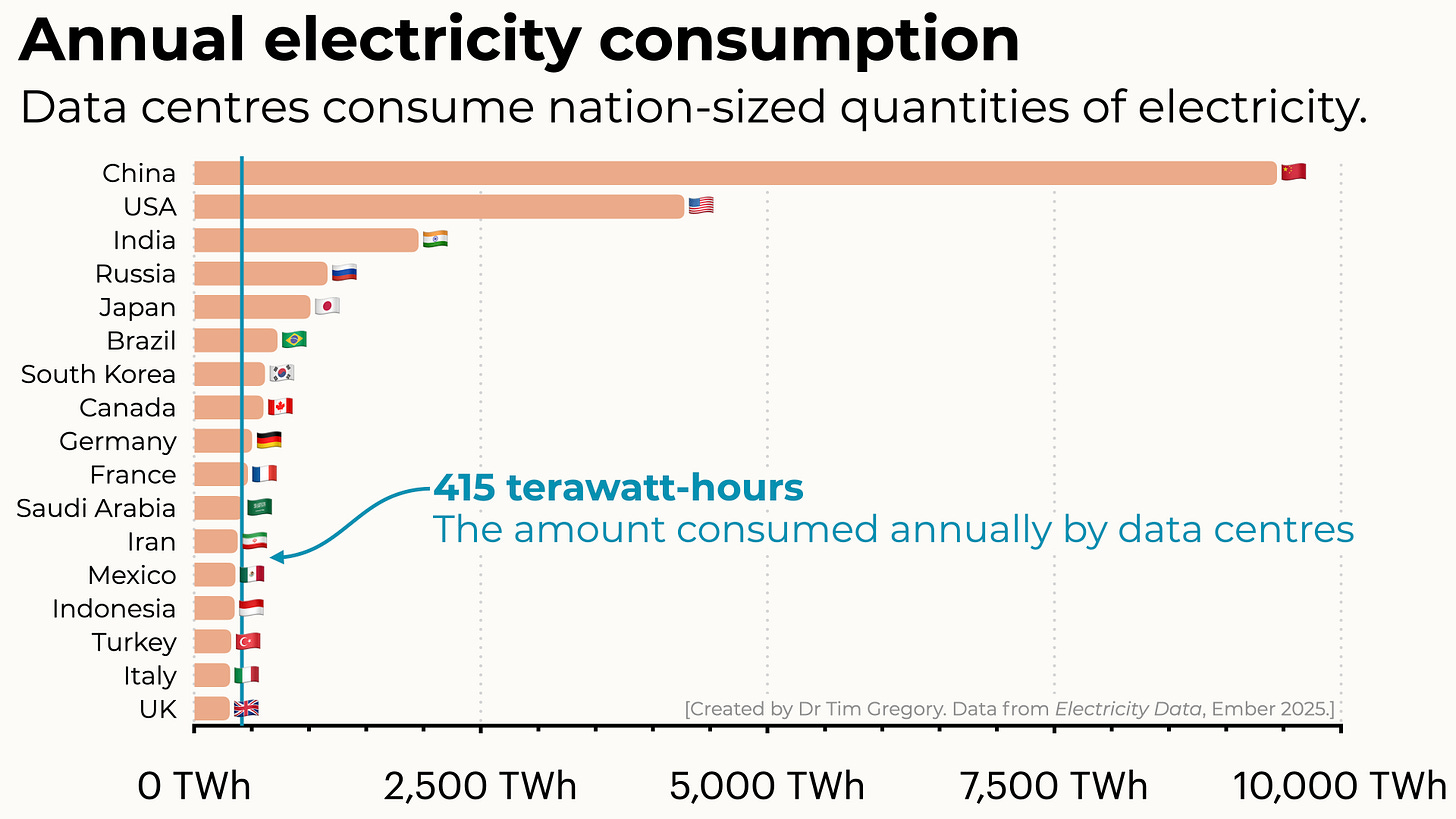
Keep in mind, there are 197 countries in the world. I plotted just 17, and all but 10 fall below the 415 terawatt-hour mark.
And these data are even starker when you compare them to the projected electricity demand.
Assuming a middle-of-the-road estimate from the International Energy Agency, data centres will consume 1,200 terawatt-hours in 2035. It’s no mere rounding error. It’s more than is currently consumed by the entire African continent annually; it’s about as much as is consumed annually by Spain, Poland, Sweden, the Netherlands, Belgium, Finland, Austria, Czechia, Portugal, Romania, Greece, and Hungary combined.
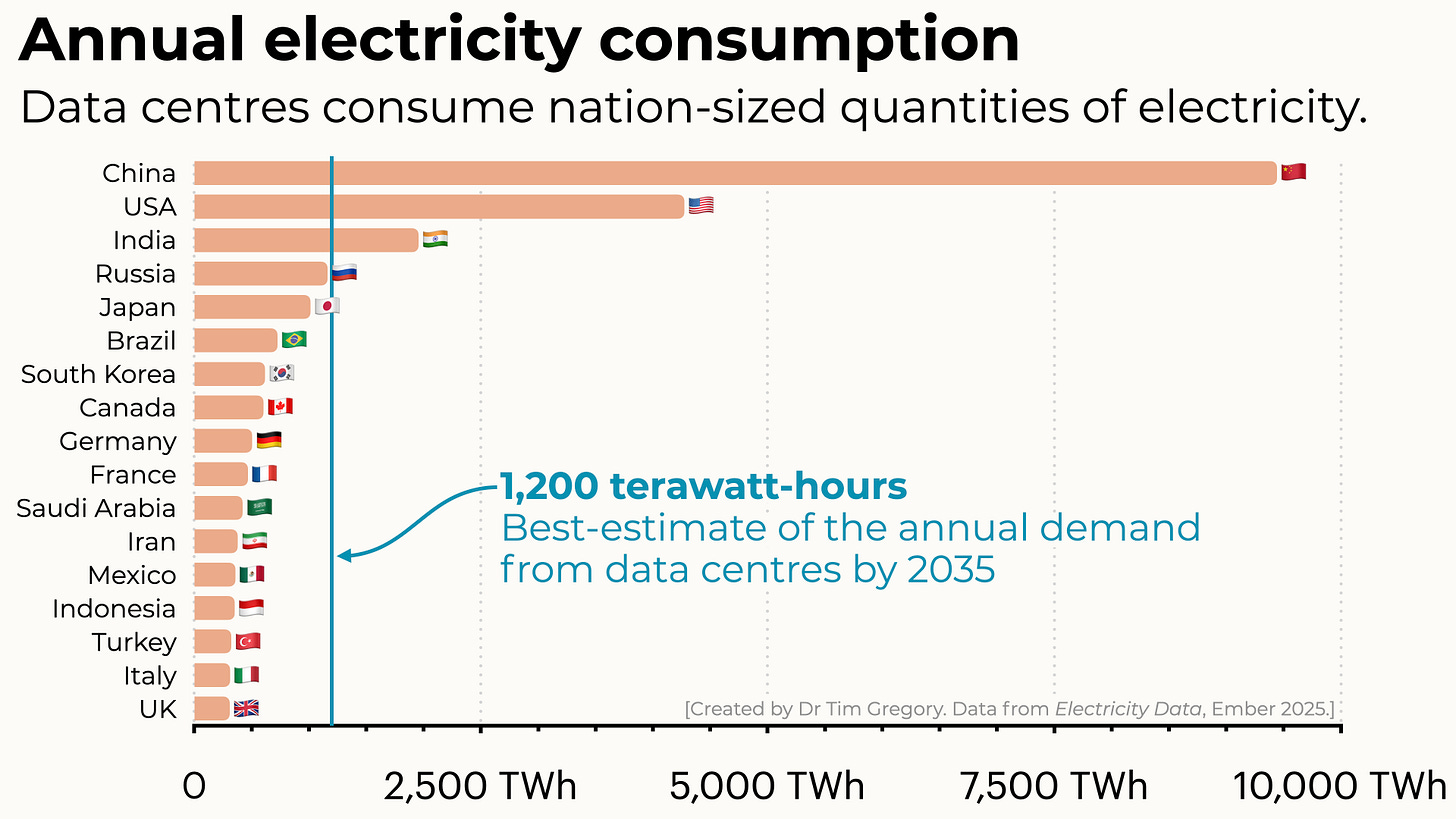
These are eye-watering amounts of electricity.
When we talk about AI, we’re talking about country-sized electricity demands. It’s like adding a dozen or so highly-developed European-sized countries to the map. It’s enormous.
What this means for net zero
When the UK became the first major economy to enshrine net zero in law in 2019, nobody talked much about AI. Nowadays, it’s all the rage.

And predictably, AI won’t make net zero any easier. Quite the opposite.
Data centres don’t really replace anything. Therefore, any rise in their electricity consumption represents additional demand.
How much additional electricity will we need by the mid-century net zero deadlines?
Good AI electricity projections don’t exist for as far out as 2050, and so let’s assume annual demand will fall between the middle-of-the-road and upper-end of the 2035 estimates. That places us somewhere in the 1,500 terawatt-hour ballpark. (For context, 1,500 terawatt-hours is twice the amount of electricity the entire European Union generated from wind — 480 terawatt-hours — and solar — 300 terawatt-hours — last year.)
For net zero, this new electricity must be generated using emissions-free sources. Meanwhile, we also need to decarbonise existing grids (no easy feat) and satisfy the growing demands of electric cars and heat pumps et cetera (daunting).
And it gets even tougher.
Urban power problems
We can’t just think about how much electricity we need to generate. We need to think about where we generate it, too.
Data centres are compact; they take up tiny amounts of space. They also tend to be located close to urban areas, such as cities and tech hubs. They’re fundamentally different to other pieces of industrial infrastructure — such as coal mines and steel plants — which tend to be some combination of remote and sprawling.
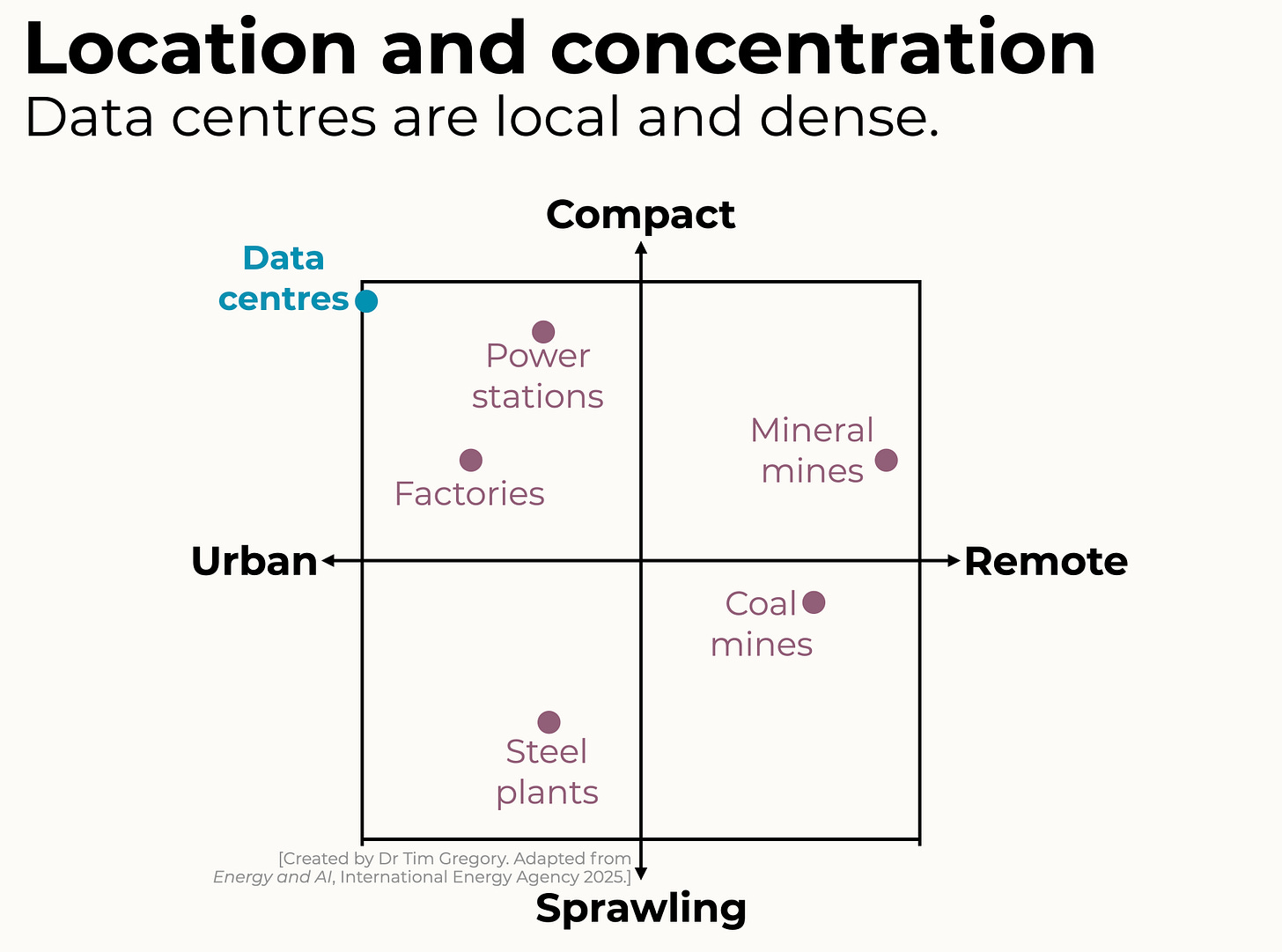
So, how will we power data centres nestled in urban areas?
Let’s rule out fossil fuels and biomass, since we’re supposed to be generating this electricity without emitting carbon dioxide.
We can also rule out wind power. Wind turbines off the blustery coast of Scotland won’t help a data centre on the M4 corridor near Bristol. Ideally, our power source will be close by, right where it’s needed.
And so, we need a power source that’s (1) local and (2) doesn’t take up much room.
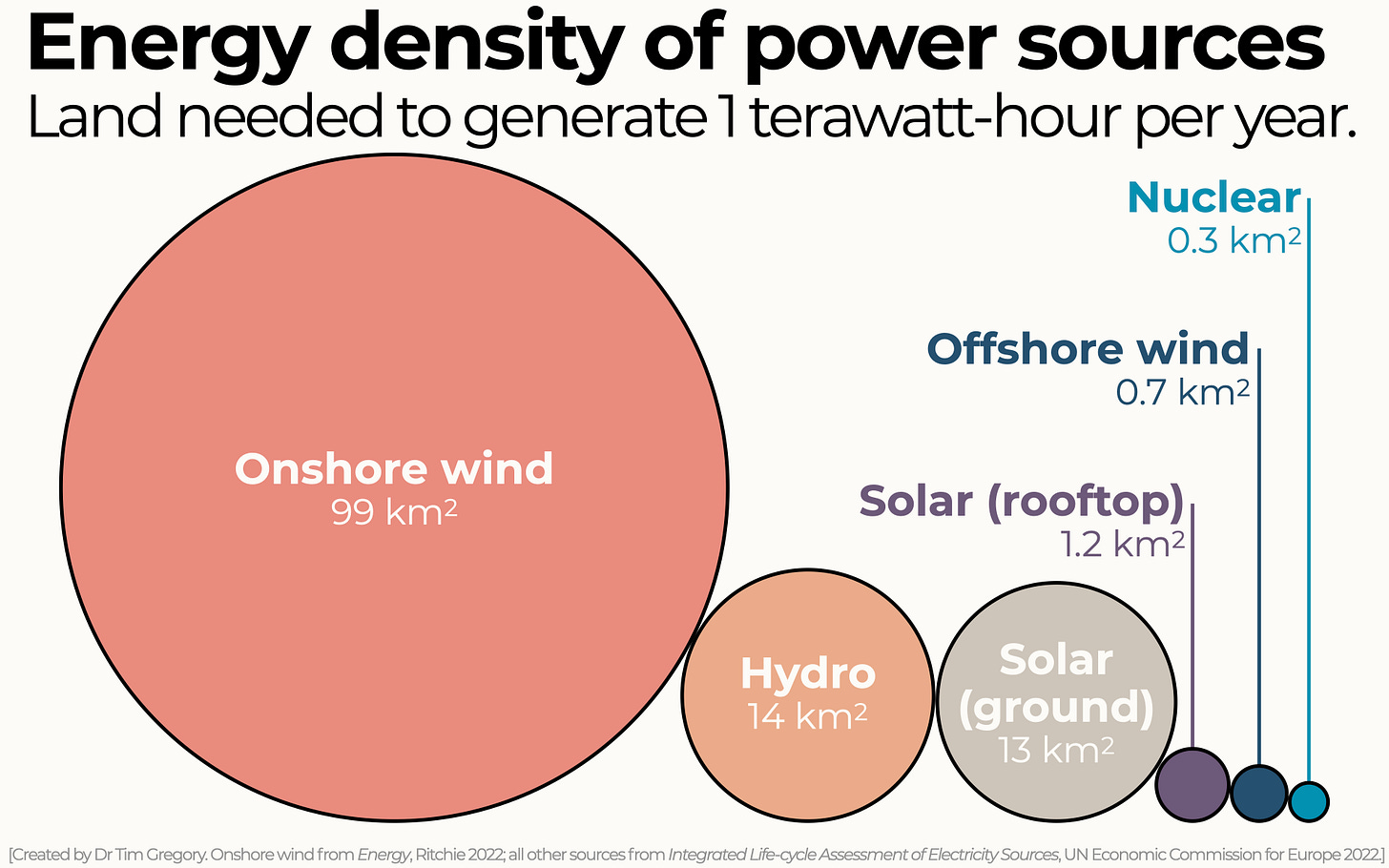
Rooftop solar and nuclear power fit the bill. We could feasibly nestle either close to a data centre — solar panels on the roof, or a nuclear power station down the road.
But there’s something else to consider: reliability.
Reliability
You can probably see where this is going.
Data centres rely on a constant flow of electricity. They need to work around the clock, 365 days a year.
Obviously, solar panels can’t satisfy this need because they don’t work at night (and are diminished on cloudy days). Solar is an ‘intermittent’ power source, which is energy industry jargon for ‘unreliable’.
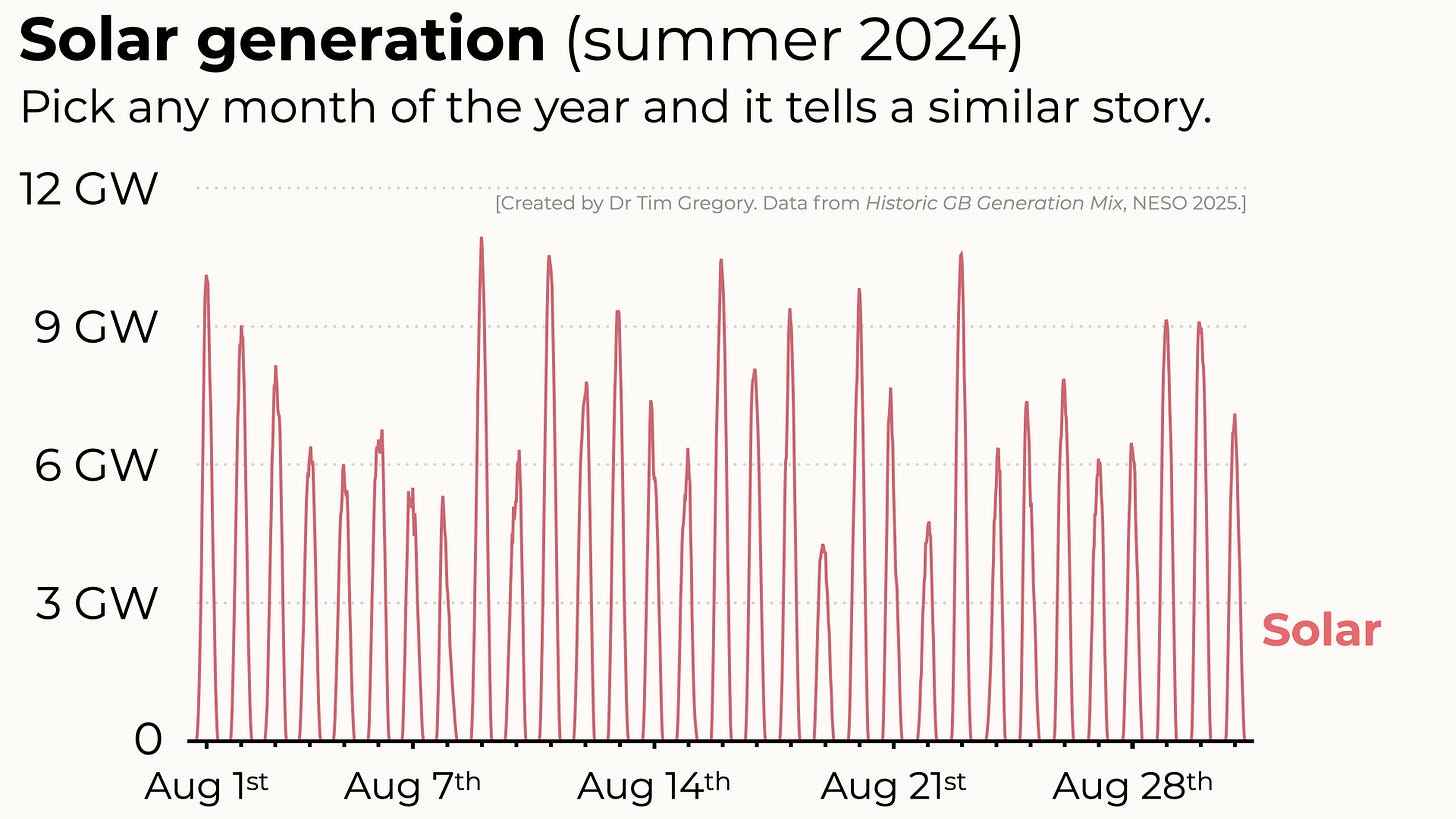
Nuclear, by contrast, is ‘dispatchable’, which is energy industry jargon for ‘reliable’. It works 24/7, independent of the weather and the rotation of the planet.
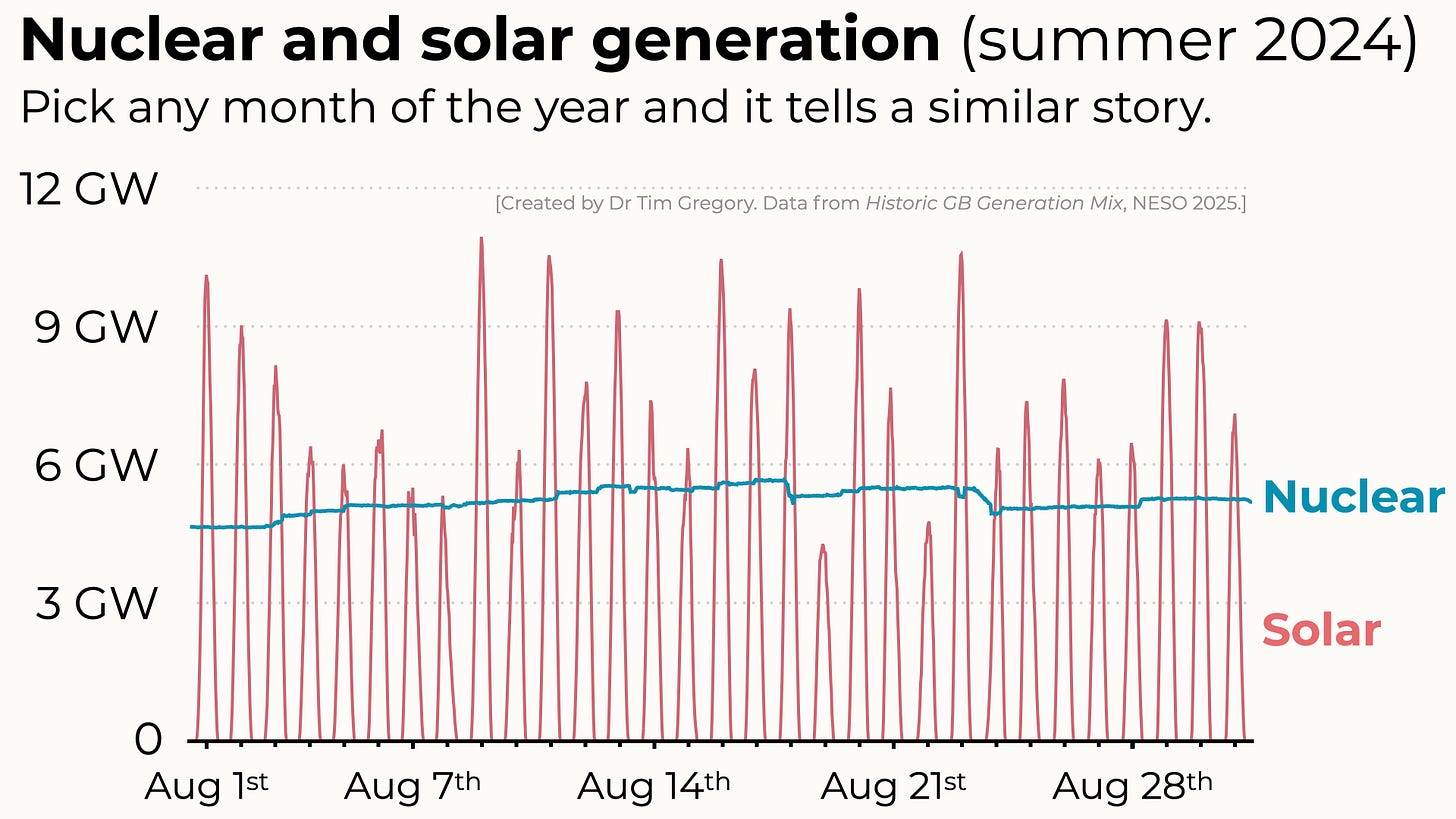
Always-on nuclear is an obvious choice for always-on data centres.
It’s already happening
When it comes to data centres, big tech is going nuclear.
In September 2024, Microsoft signed a 20-year deal to buy nuclear power from Three Mile Island in Pennsylvania, specifically to power its AI data centres.
Just one month later, Google signed a deal with Kairos Power to buy small modular reactors — miniature reactors built on a factory line — for its data centres. Later that same month, Amazon bought a stake in X-energy, a nuclear developer that hopes to use its reactors to power data centres.
In May 2025, Chief Executive of Amazon Web Services said nuclear power is a ‘great solution’ when it comes to AI data centres because they need an ‘excellent source of zero carbon, 24/7 power’.
And in June 2025, Meta — the parent company of Facebook, Instagram, and WhatsApp — announced it’ll be using a nuclear power station in Illinois to power its data centres.
In sum
AI is a game-changer for clean energy. In sum:
AI relies on electricity-hungry data centres.
The explosion of AI necessitates a growth in clean electricity generation beyond what we anticipated a few years ago.
The amount of electricity we’re talking about is huge. It’s more than most countries consume a year.
The electricity should be produced locally, reliably, and — with a mind to net zero — emissions-free.
Nuclear is the obvious choice. It’s localised, takes up a small land area, and is reliable.
Big tech companies — Microsoft, Google, Amazon, Meta — are already looking towards nuclear to power their data centres. I think this is a sign of things to come.
Final word
Finally, it’s worth emphasising that AI blindsided just about everyone. Nobody saw it coming.
When governments and tech giants made their net zero commitments, few of them anticipated the massive amounts of clean power data centres will soon (and already do) demand.
We have no idea what other power-hungry technologies might emerge in the coming decade(s), placing even more strain on an already overstretched grid. But one thing is for sure: nuclear power — technology that exists here, today — is one of the best tools we have for satisfying future needs. And that, I think, is something to feel optimistic about.
I go into a lot more depth on topics like this in my new book, Going Nuclear: How the Atom Will Save the World. It’s out now.
Find out more here.


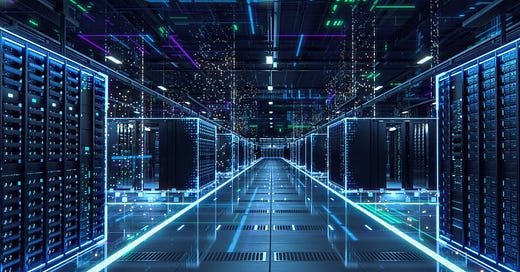



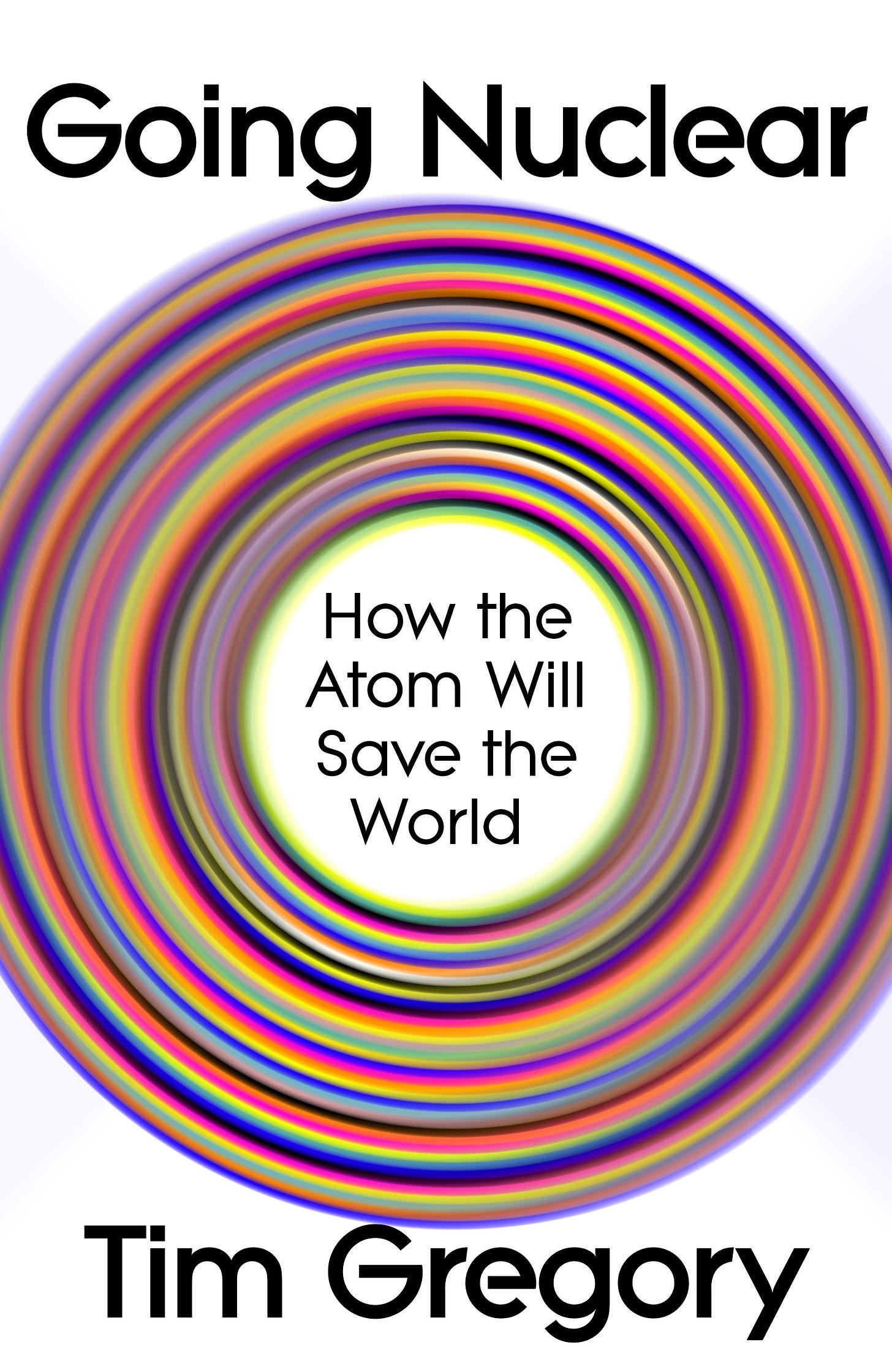
It's an odd topic, in that some people have a negative view of AI and what it means for creativity and jobs, and possibly human survival, and I think there's a distinct risk that nuclear power's association will be fuel for all manner of tin-foil hat designs.
To be honest, those demands don't require much controversial these days, when almost anything you can shake a stick at is controversial to someone.